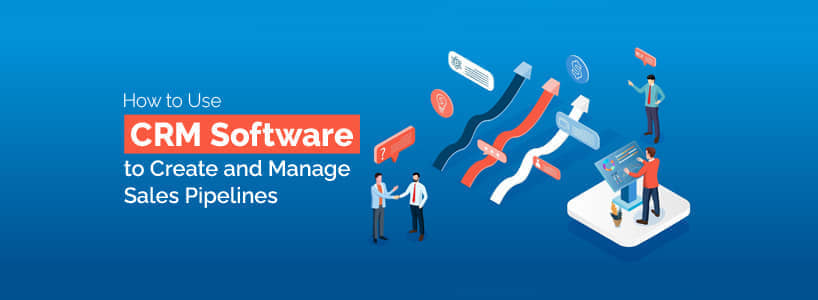A well-structured sales pipeline is essential for any business looking to increase revenue and improve sales efficiency. CRM software provides a powerful tool to create, manage, and optimize your sales pipeline. In this blog post, we will explore how to effectively utilize CRM Software to streamline your sales process and drive success.
1. Define Your Sales Stages:
- Identify key stages: Start by clearly defining the different stages your leads and prospects go through before becoming customers. Common stages include:
- Prospecting
- Qualifying
- Needs Assessment
- Proposal/Presentation
- Negotiation
- Closed-Won
- Closed-Lost
- Customize stages: Tailor these stages to your specific sales process and industry. Consider factors like the length of your sales cycle and the complexity of your products or services.
2. Create Sales Pipelines:
- Visualize your pipeline: Use your CRM software to create a visual representation of your sales pipeline. This can be done through a Kanban board, a list view, or a calendar view.
- Assign stages: Assign each lead or opportunity to the appropriate stage based on their current progress.
- Set probability: For each stage, set a probability of closing the deal. This will help you accurately forecast revenue and identify potential bottlenecks in your sales process.
3. Track and Manage Leads:
- Centralized database: Store all relevant information about your leads and prospects in your CRM software. This includes contact details, company information, previous interactions, and notes.
- Automation: Use automation features to streamline lead management tasks, such as sending follow-up emails, scheduling appointments, and assigning leads to sales representatives.
- Lead scoring: Implement a lead scoring system to prioritize leads based on their potential value to your business. This helps sales teams focus on the most promising opportunities.
4. Analyze and Optimize:
- Reporting and analytics: Leverage your CRM software's reporting and analytics capabilities to gain insights into your sales pipeline performance. Track key metrics like conversion rates, average deal size, and sales cycle length.
- Identify bottlenecks: Use data-driven insights to identify any bottlenecks or inefficiencies in your sales process. Make necessary adjustments to improve your team's productivity and close more deals.
- Forecasting: Create accurate sales forecasts based on your pipeline data. This helps you make informed decisions about resource allocation, budgeting, and business planning.
5. Collaboration and Communication:
- Team collaboration: Enable effective collaboration among sales team members by sharing information, tracking progress, and coordinating activities within your CRM software.
- Communication tools: Utilize built-in communication tools, such as email templates, phone logging, and activity tracking, to improve communication with prospects and customers.
(Read also - How to Use CRM Software to Improve Your Sales Process )
By effectively using CRM software to create and manage your sales pipeline, you can improve sales efficiency, increase revenue, and drive business growth. Remember to continuously analyze your pipeline data, make data-driven decisions, and adapt your strategies to meet the evolving needs of your business.
